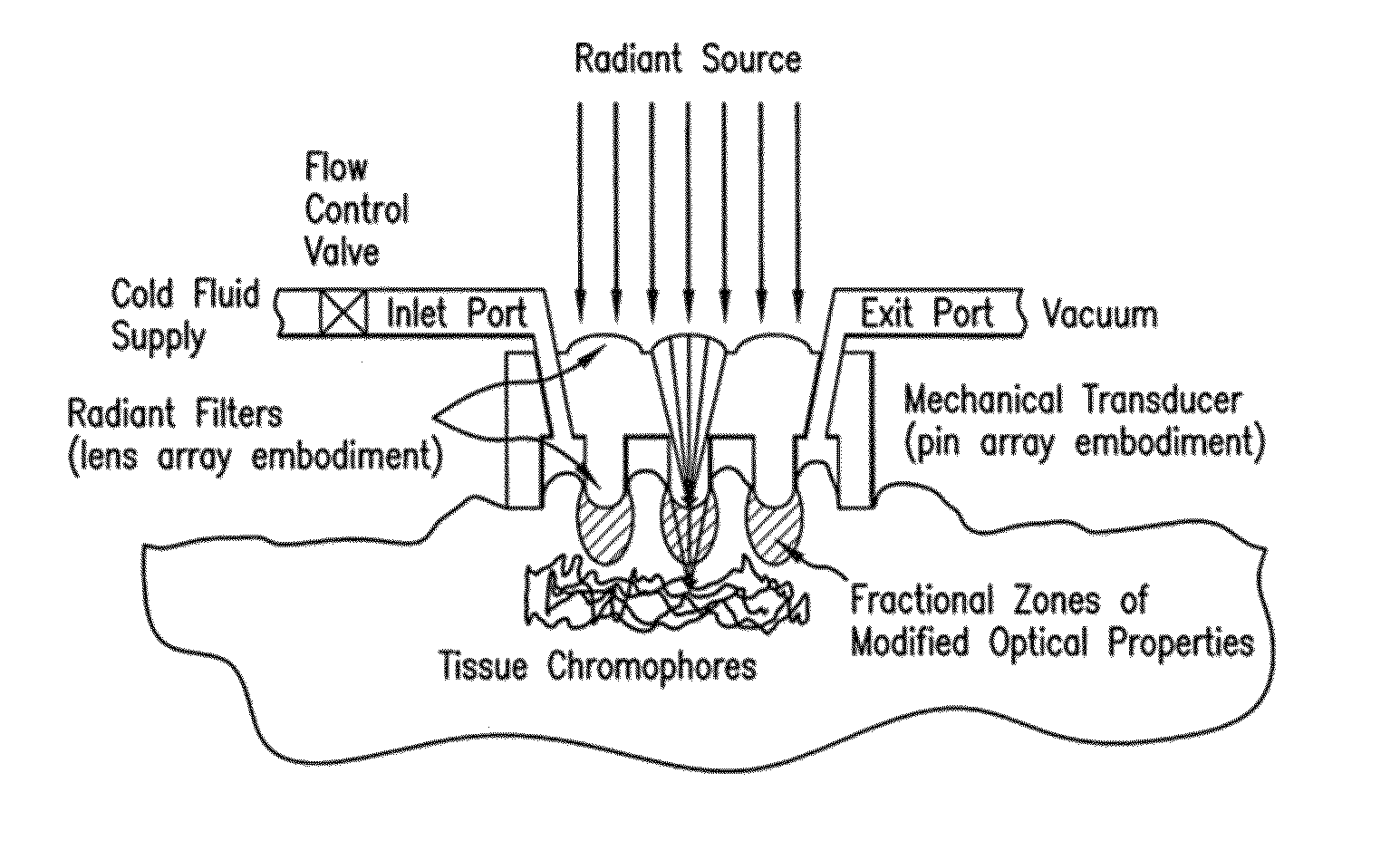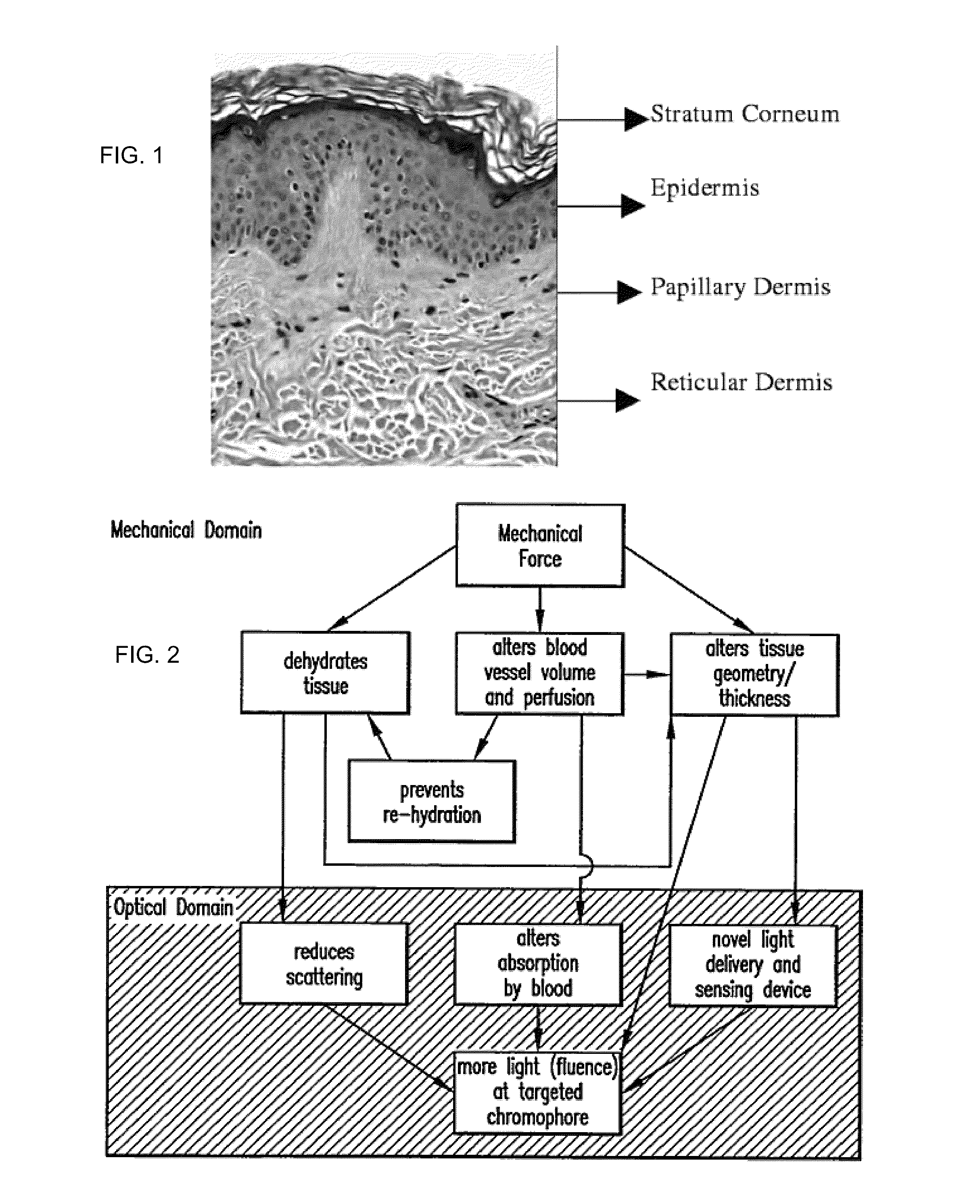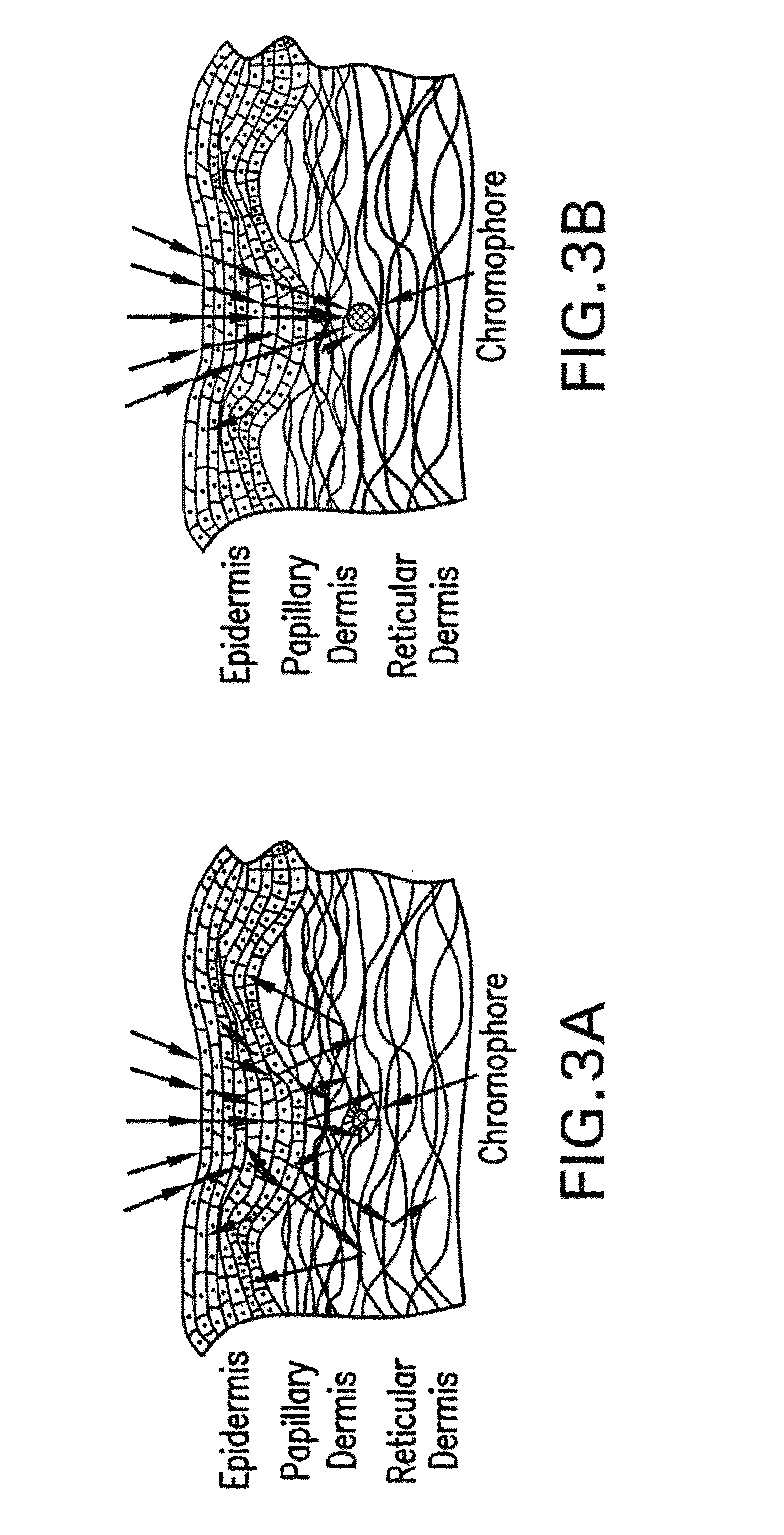System, devices, and methods for optically clearing tissue
a tissue optical and optical technology, applied in the field of manipulating the optical properties of tissue, can solve the problems of desired irreversible destruction and scattering strength, and achieve the effects of reducing the scattering strength of engineered human skin optical properties, reducing light scattering in skin, and increasing fluen
- Summary
- Abstract
- Description
- Claims
- Application Information
AI Technical Summary
Benefits of technology
Problems solved by technology
Method used
Image
Examples
example 1
Observations on Human Skin
[0169]The device was applied to the bottom of the lower arm and pressed into the skin. Observations may be possible through the applied device and after device removal.
[0170]Pressing the device onto the skin without vacuum caused some reddening of the tissue surrounding the pins. This was caused by the displacement of blood from underneath the pins. Skin under the pins turned pale in appearance. After removal of the device the previously described skin color changes persisted for several seconds before pale, blood-voided skin slowly became more red and the increased red appearance of peripheral tissue decreased.
[0171]Applying a vacuum of ˜750 mm Hg added significantly to the benefits of the device. The mechanical stress on the tissue underneath the pins was noticeably increased, resulting in better stretch and more complete conformation of the skin around each pin. This added mechanical influence caused more complete displacement of interstitial tissue wate...
example 2
Unaided Eye Observations on In Vitro Pig Skin
[0175]The advantage of using in vitro tissue may be the ability to observe transmitted light through the specimen. Porcine skin may be comparable to human skin and was used for this experiment. The sample was previously snap frozen in liquid nitrogen and allowed to thaw at 25° C. The epidermis was highly pigmented and therefore significantly attenuated visible light transmission, cf. FIGS. 9(a) and (b).
[0176]However, as the Example Device No. 1 was applied to the skin, locally increased light transmission was immediately apparent. Removal of the device from the skin after a few seconds allowed direct visualization of locally increased light transport through the tissue, which was compressed and mechanically dehydrated by the pins.
[0177]Similarly, digital photographs may be acquired using in vitro porcine skin while device no. 1 was applied to the skin surface. Light from a broadband CW white light source was transmitted through the tissue...
example 3
Optical Coherence Tomography Measurements at 1290 nm on In Vivo Human Skin
[0180]Optical coherence tomography as a non-invasive imaging modality may be a very useful tool in assessing not only skin deformation and compression due to the device but also to analyze improved light transport within the compressed tissue. Acquisition of lateral cross-sectional images of tissue permitted observation of the contrasting light propagation in tissue underneath pins and between pins. The following OCT images may be acquired on the lower arm of human subjects.
[0181]For easier comparison of the OCT imaging depth the original image shown on the top of each figure was digitally processed in order to re-register the tissue surface to a common flat level shown in the bottom part of each figure. OCT images in FIGS. 12(a) and (b) may be acquired with device no. 3 and nicely illustrate the enhanced light penetration depth in areas of previously compressed tissue. The image in FIG. 12(a) was obtained fro...
PUM
 Login to View More
Login to View More Abstract
Description
Claims
Application Information
 Login to View More
Login to View More - R&D
- Intellectual Property
- Life Sciences
- Materials
- Tech Scout
- Unparalleled Data Quality
- Higher Quality Content
- 60% Fewer Hallucinations
Browse by: Latest US Patents, China's latest patents, Technical Efficacy Thesaurus, Application Domain, Technology Topic, Popular Technical Reports.
© 2025 PatSnap. All rights reserved.Legal|Privacy policy|Modern Slavery Act Transparency Statement|Sitemap|About US| Contact US: help@patsnap.com



